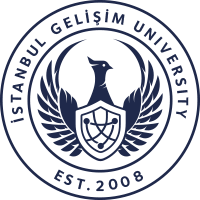Presbycusis is an age-related sensorineural hearing loss that symmetrically affects both ears. It primarily impacts high-frequency sounds and is characterized by difficulties in speech comprehension and the presence of tinnitus. This study examines the causes, diagnostic methods, and treatment approaches for presbycusis.
Presbycusis typically develops as a result of aging and presents as a bilateral, symmetrical type of sensorineural hearing loss. Its most notable feature is the loss of hearing at high frequencies, which leads to challenges in understanding speech. A common complaint from individuals is: “I can hear, but I can’t understand.” Hearing loss is often accompanied by tinnitus (ringing in the ears).
Although the etiology of presbycusis is complex, key underlying causes include damage to the hair cells in the cochlea, degeneration of the spiral ganglion, and deterioration of central auditory pathways due to aging. In addition to these factors, genetics, long-term noise exposure, use of ototoxic medications, and metabolic or vascular issues can also contribute to the development of presbycusis.
According to Schuknecht’s classification, presbycusis is categorized into four main types:
Sensory: Loss of hair cells in the cochlea
Neural: Degeneration of the spiral ganglion
Metabolic: Atrophy of the stria vascularis
Mechanical: Thickening of the basilar membrane
A detailed medical history and otoscopic examination are essential in the diagnostic process. Audiological tests such as pure tone audiometry, speech audiometry, tympanometry, and otoacoustic emissions are commonly used to support diagnosis. In the early stages, hearing loss is typically limited to high frequencies, but over time it may affect all frequency ranges. Speech discrimination scores vary depending on the severity of the hearing loss.
Presbycusis can significantly impact an individual’s quality of life. In addition to hearing loss, psychosocial issues such as social isolation, depression, communication difficulties, and cognitive decline may also occur.
Treatment is generally based on rehabilitative approaches. Hearing aids are selected and calibrated according to the individual's audiological test results. With advanced digital technology, features such as frequency-specific amplification, noise suppression, and directional microphone systems can help patients better perceive speech, thereby improving their psychosocial well-being and overall quality of life.
Although presbycusis is not entirely preventable, early intervention through noise protection, a healthy lifestyle, management of chronic conditions, and regular hearing screenings can significantly reduce its impact. In this way, individuals’ hearing health can be preserved, and their quality of life can be sustainably supported.
